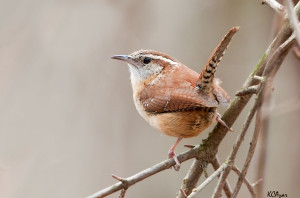Attract Birds to Your Garden this Winter
go.ncsu.edu/readext?285251
en Español / em Português
El inglés es el idioma de control de esta página. En la medida en que haya algún conflicto entre la traducción al inglés y la traducción, el inglés prevalece.
Al hacer clic en el enlace de traducción se activa un servicio de traducción gratuito para convertir la página al español. Al igual que con cualquier traducción por Internet, la conversión no es sensible al contexto y puede que no traduzca el texto en su significado original. NC State Extension no garantiza la exactitud del texto traducido. Por favor, tenga en cuenta que algunas aplicaciones y/o servicios pueden no funcionar como se espera cuando se traducen.
Português
Inglês é o idioma de controle desta página. Na medida que haja algum conflito entre o texto original em Inglês e a tradução, o Inglês prevalece.
Ao clicar no link de tradução, um serviço gratuito de tradução será ativado para converter a página para o Português. Como em qualquer tradução pela internet, a conversão não é sensivel ao contexto e pode não ocorrer a tradução para o significado orginal. O serviço de Extensão da Carolina do Norte (NC State Extension) não garante a exatidão do texto traduzido. Por favor, observe que algumas funções ou serviços podem não funcionar como esperado após a tradução.
English
English is the controlling language of this page. To the extent there is any conflict between the English text and the translation, English controls.
Clicking on the translation link activates a free translation service to convert the page to Spanish. As with any Internet translation, the conversion is not context-sensitive and may not translate the text to its original meaning. NC State Extension does not guarantee the accuracy of the translated text. Please note that some applications and/or services may not function as expected when translated.
Collapse ▲Feeding birds in your backyard is a great way to add some life and color to a cold, winter landscape. There are many different bird species who can visit a feeder. The type of landscape habitat you have in your backyard will determine how many and the types of birds who visit. A landscape that is more wooded and in rural areas provides a haven for a greater diversity of birds.
Deciding what type of feeder and type of seed to buy can be overwhelming with the numerous choices available. Different bird species prefer different feeders and seed. When it comes to feeders, factors that will have an influence include what type you use, where you set it up and near-by water availability. If you want to attract a variety of birds, having a variety of feeders can increase diversity. All feeders should be sturdy, not allow water in and be easy to clean.

Carolina Wren is one type of bird that gardeners can attract to their backyard in the winter season. Photo Credit: Kelly Colgan Azar, NC State Extension
Three common feeders often used are house feeders, tube feeders and tray feeders. A house feeder is one that looks like a house made of clear sides and sets on a platform. The advantages are you can easily tell when more seed needs to be added and the seed is less likely to get wet. The disadvantage is it is easy for squirrels to also feed on seed. A tube feeder is a hollow, clear cylinder with multiple feeding perches. The size of the perch can influence what type of birds visit, with larger birds needing a larger perch and small birds able to use small and large perches. Tray feeders are simply flat surfaces that seed is spread on. They are easy to make but do not provide a way to keep water and other animals out. You want to make sure tray feeders have drainage holes to allow water to drain.
When deciding where to place feeders consider your point of view but also the bird’s point of view. Most people want their feeders in a place visible from inside their home. The most common location is to place feeders near a favorite window. From the bird’s point of view, they want a location where they feel safe and secure. Placing feeders within 10 feet of protective covering, such as trees and shrubs allows birds to quickly retreat for safety.
There are many types of seed available for birds. One common type is black-oil sunflower seed. It is preferred by small species of birds. It has a high oil content that is nutritionally important and a thin seed coat which makes it easy to crack open. Striped sunflower seeds are more popular with blue jays and cardinals instead of smaller birds. Millet attracts many different species but can attract less desirable birds like house sparrows. Thistle seed is popular among several species of finches. Peanuts attract blue jays, chickadees and woodpeckers.
To keep it simple, a mixture of seed types allow for you to view a wide range of bird species. You can choose to purchase birdseed mixes or create your own mix. When purchasing a mix, check out what is actually in the mix. Birds can tell the difference among seeds and will sort through mixes. Some mixes contain seed not attractive to birds, like wheat, oats, rice and rye seed.
It was mentioned earlier that water availability can have an influence on birds visiting a feeder. Besides food, birds also need a source of water for drinking and bathing. Having a water source attracts different bird species that would not otherwise visit your feeder. You can buy or make your own bird bath. All the bird bath needs to have is a non-slippery surface and be no more than three inches deep. During freezing winter temperatures, break away frozen water and refill bird baths or use heaters to prevent water from freezing.
Attracting birds to your backyard can be a simple but great way to add some action to your landscape in the winter season. Many gardeners enjoy the excitement of recognizing different bird species by seeing returning visitors and spotting a new species coming to visit.
Jessica Strickland is an Agriculture Extension Agent, specializing in horticulture for North Carolina Cooperative Extension in Wayne County.
Learn More!
- Sign up for the Wayne County Extension Gardening email list to receive timely gardening tips.
- Learn more by following us on Facebook and Instagram.




